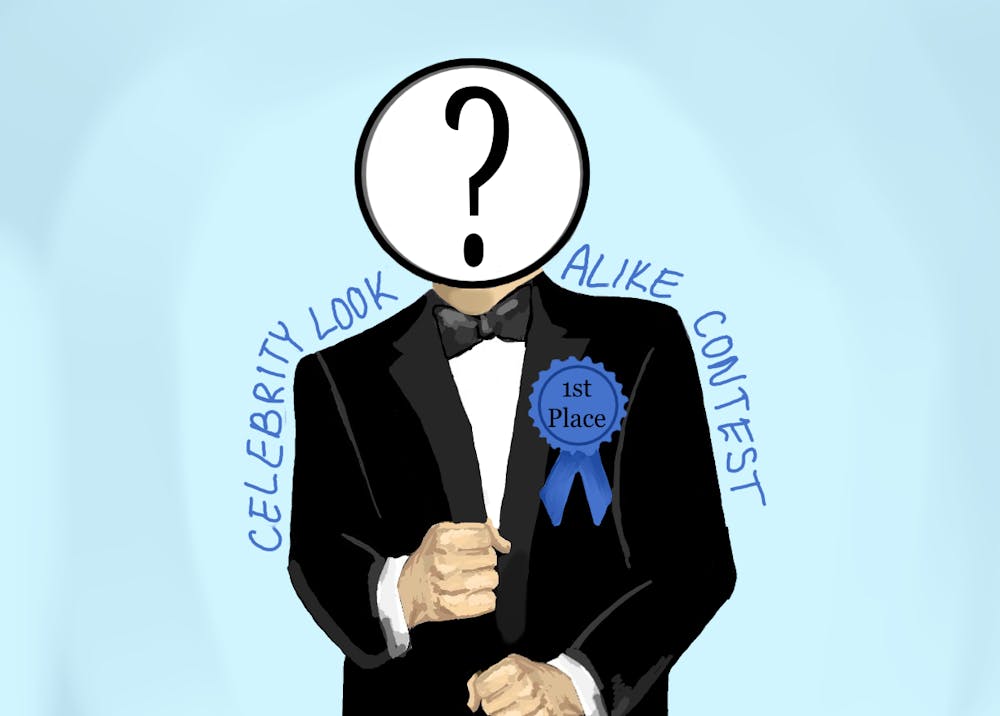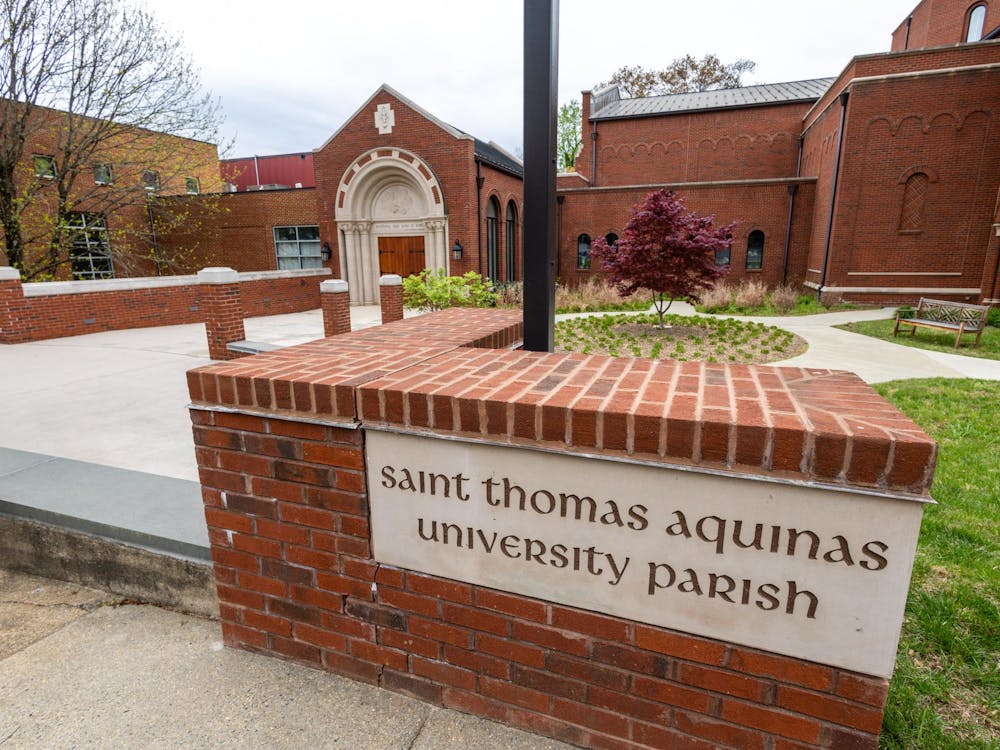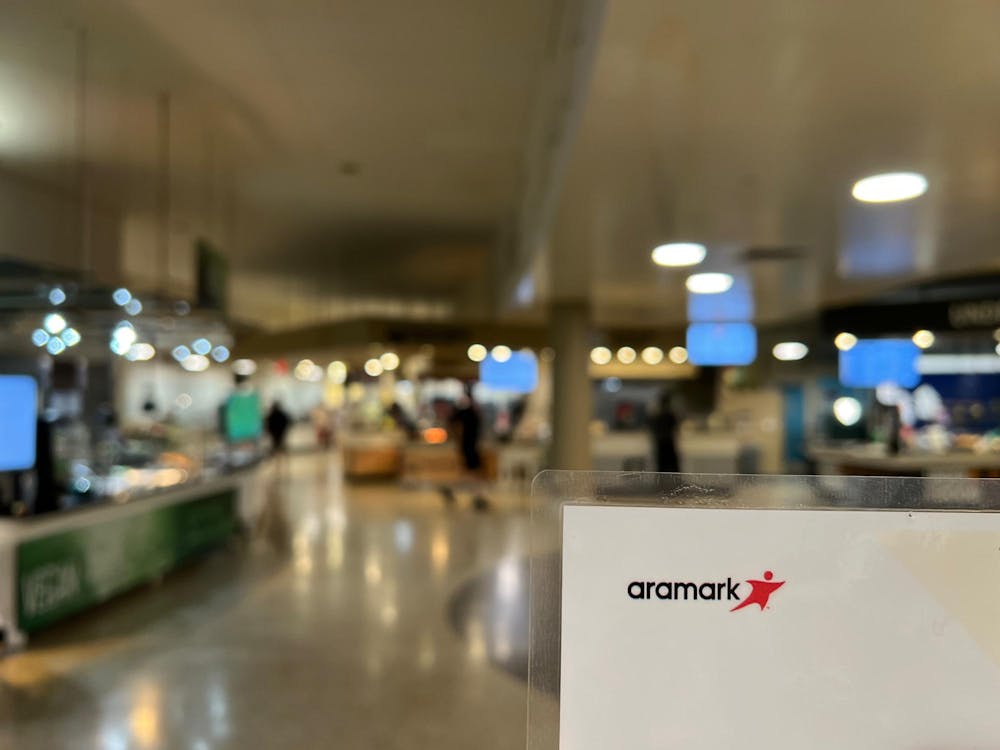From the St. Patrick's Day Ginger Run on Mad Bowl to the dorm-wide scream before quiet hours go into effect for finals season, Grounds has seen its fair share of unique, student-led events. In true University fashion, students will have another opportunity to partake in a similar type of unconventional school spirit, and to share a laugh, when South Lawn becomes the site of another offbeat affair — a Timothée Chalamet as Bob Dylan look-alike contest.
Hosted by SWAP — a Contracted Independent Organization that uses fashion to weave sustainability with self-expression through school-wide clothing exchanges and upcycling workshops — the contest is a comedic nod to Chalamet’s depiction of the singer-songwriter in the recently released film, “A Complete Unknown.” All are invited to show up in sunglasses, oversized coats and brooding demeanors for a shot at winning the grand prize of $2.52 and a harmonica.
While the concept of the contest fits the niche of on-Grounds antics, the celebrity look-alike contest is by no means isolated to the University. The trend kicked off in October in New York with a flyer and a promise of fifty dollars for the participant who looked the most like Timothée Chalamet, and since then celebrity look-alike contests have taken over the minds and social media feeds of both casual scrollers and the chronically online for the last few months.
The way the contests work is quite simple — participants who believe they resemble the chosen celebrity show up in outfits, and occasionally with props, that accentuate their likeness. They are judged on a variety of factors along with resemblance, like mastery of mannerisms and sometimes even performance. The judging is conducted by event organizers and the sizable crowds of spectators, whose reactions and enthusiasm serve as the deciding metric for who will be crowned the winner. Since the contest that started it all — which Chalamet himself attended, adding to the spectacle — a plethora of contests have been held in major cities around the world for other celebrities, including Harry Styles, Glen Powell, Paul Mescal and Jeremy Allen White to name a few.
The impact and staying power of the contests was one of the reasons Jaden Bernard, SWAP Secretary and fourth-year College student, and Franny Hesford, SWAP Sustainability Chair and third-year College student, decided to organize one. The two said they came up with the idea over winter break while brainstorming events the club could host in the spring semester. They said that a look-alike contest not only perfectly aligned with SWAP’s eccentricity but would also give University students a chance to be a part of the phenomenon together.
“I feel like we’re making U.Va. a part of the trend,” Hesford said. “Having it here at U.Va., it just makes sense. It brings everyone together to participate in something.”
This sentiment of togetherness that Hesford highlighted is something that Assoc. Media Studies Prof. Keara Goin believes is a part of the contests’ current appeal. Goin said that celebrity look-alike contests have been around “forever,” but this recent fascination is, in part, due to people's newfound desire — especially in a post-pandemic world — for offline connection and experiences.
Unlike most internet trends that really only thrive within the confines of digital platforms, these contests rely on organic, in-person community engagement. Social media is used to spread the word further and, of course, memorialize the moment, but it is primarily flyers and word of mouth that initially generate buzz for each contest. This was the case for SWAP’s contest, whose flyers promoting the event have been plastered all over Grounds. Goin said the way these look alike contests are employing social media is reminiscent of the internet in the 90s and early 2000s, during which online threads and chat rooms were used as tools to promote in-person interaction.
“[People are] returning to this idea of, instead of engaging on the internet, using the internet as an intermediary to engage with people in real life — to have person to person encounters and things like that,” Goin said.
Goin also said that these contests are reacting to the disheartening state of the world right now. For Americans specifically, such contests are a result of the uncertainty felt post-presidential election according to Goin. She said that the public voting element of these contests is almost a reclamation of control, empowering those in the crowd while simultaneously giving them a moment of escapism.
“In many ways, it's a reaction to this malaise post-election,” Goin said. “I do think that people, kind of on a social-psychological level, feel like they want to participate in [the contests] in order to bring some levity, some lightness, into their lives.”
Bernard and Hesford were mindful of this as they were conceptualizing SWAP’s look-alike contest. They said that, because of the heaviness of current events and the dreariness of the winter months — which can compound the weight of academic pressures many students at the University already carry — they hope to bring this same kind of carefree amusement to Grounds through the event.
“America’s in a weird place right now, it’s kind of a depressing time of year,” Bernard said. “I think we need more silliness here anyway. I think U.Va. teaches us to be serious, but I think people want to be silly.”
Bernard and Hesford said that this chance to be silly is meant for everyone, sharing that the contest is not exclusive to men but is open to anyone of any gender identity who wants to participate.
This gender element is a point of particular interest for Goin. She said that these kinds of contests have always played with the performance of gender, noting that this happens most frequently in drag — a craft in which entire careers have been built around impersonating a certain celebrity. While today’s contests are primarily known for their humorous nature, Goin thinks that they also act as a subtle confrontation of traditional conventions.
“It's not just straight men [participating], it is queer men and it's also women, regardless of their sexual orientation,” Goin said. “That's something that I see as a bit of a cultural pushback against the [idea] that gender is something that is fixed, that gender is something that is biologically based, versus something about identity.”
Additionally, Goin said these contests are also subverting gender norms. While there have been a couple of look alike contests for female celebrities, like Zendaya and Rachel Sennot, these contests have primarily been centered around men — something Goin sees as a reversal of traditional dynamics.
“Most of these contests seem to be for masculine or male identifying celebrities, and a lot of the judging or spectatorship is being done by heterosexual women of these contestants,” Goin said. “I think that that is an interesting reversal in terms of how women are usually kind of evaluated, whereas men are … being made a spectacle based on what they look like versus women taking that position.”
Along with the conventions of identity, Goin noted that these contests playfully undermine — rather than reinforce — the prestige and exclusivity often associated with celebrity. They showcase that fame is not always rooted in unique or irreplaceable qualities, but is instead largely about perception — who we, as a collective, choose to pay attention to.
“[The contests are] showing that celebrity is something that is a constructed thing, that anybody can be a celebrity if they have the right kind of fabrication that goes into creating [celebrity],” Goin said. “This proves that for everyone we think is so special, there are 50 people that can duplicate it.”
Goin said that while these contests are partially poking fun at the famous, the winners actually go on to experience their own brief moments of celebrity, receiving media attention after being crowned and sometimes being acknowledged by the celebrities they resemble. The look-alikes of Timothée Chalamet were even featured in promotional material ahead of the actor’s appearance on “Saturday Night Live” as the host and musical guest.
“It almost doesn't matter who they're imitating, it's just [about] getting close to the constructed boundary between the world of celebrity and the world of the average person,” Goin said.
As Goin suggests, cultural undercurrents and the desire for hilarity are sure to shape the Timothée Chalamet as Bob Dylan look-alike contest. Along with making the trend timely and resonant, this duality has also made each iteration memorable and full of fun. Like the contests of look-alike past, Bernard and Hesford ultimately hope their event is just as enjoyable for those that attend — whether they simply show up to watch, or show out in their Chalamet-as-Dylan best.
“We're doing it just so that people can have a good time,” Hesford said.
With new contests continuing to pop up globally — all of which are met with enthusiasm by the trend’s admirers — it is clear that as long as there are famous faces to imitate and crowds eager to join in on the joke, the celebrity look-alike contest is not going anywhere anytime soon.







